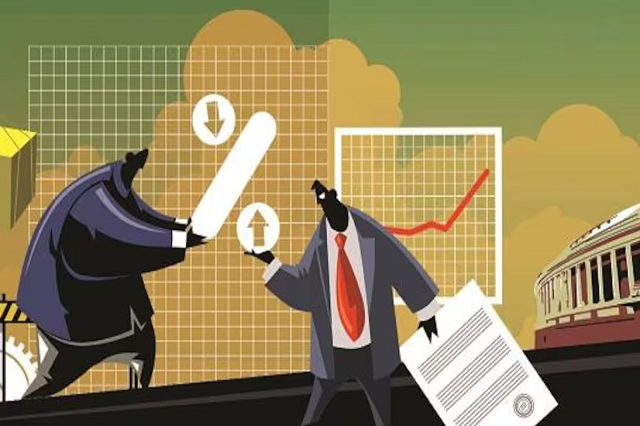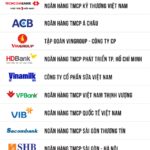
Banks Aim for High Growth in 2025
Despite maintaining low-interest rates to support economic growth, many Vietnamese banks are targeting high profit growth this year.
Most recently, PGBank set a goal to increase its total assets by 15-20% by the end of 2025 compared to the beginning of the year. Credit outstanding will be in line with the State Bank of Vietnam’s (SBV) approval. Capital mobilization will grow in tandem with credit. Notably, PGBank aims for a 70% increase in pre-tax profits in 2025, reaching VND 716 billion.
OCB targets total assets of VND 316,779 billion by the end of 2025, a 13% increase. Market 1 mobilization is set at VND 218,842 billion, up by 14%, while Market 1 credit outstanding is expected to reach VND 208,472 billion, a 16% increase. OCB forecasts a 33% rise in pre-tax profits in 2025, amounting to VND 5,338 billion.
VIB, meanwhile, has set a pre-tax profit target of VND 11,020 billion for 2025, a 22% increase. Their total assets plan amounts to VND 600,350 billion, a 22% rise. Credit outstanding and capital mobilization are projected to increase by 22% and 26%, respectively.
Nam A Bank (NAB) has outlined a business plan for 2025, targeting total assets of VND 270,000 billion, a 10% increase. They aim to mobilize VND 209,000 billion in individual and economic organization deposits and capital raised through the issuance of securities, a 17% jump. NAB expects to reach VND 194,000 billion in outstanding loans to individuals and economic organizations, a 16% increase, while keeping non-performing loan ratios below 2.5%. The bank forecasts consolidated pre-tax profits of VND 5,000 billion, a 10% increase.
Eximbank (EIB) has set ambitious goals for 2025, with capital mobilization targeted at VND 206,000 billion, a nearly 16% increase. Credit outstanding is expected to reach VND 195,500 billion, a rise of over 16%, while consolidated pre-tax profits are projected to hit VND 5,580 billion, a significant 33% jump.
HDBank (HDB) is aiming for higher credit growth in 2025 than the previous year, with non-performing loan ratios kept below 2%. Pre-tax profits are expected to surpass VND 20,000 billion, a 25% increase.
SeABank (SSB) has set a 15% credit growth target for 2025, with total assets expected to grow by 10%. Pre-tax profits are projected to increase by nearly 10%.
VPBank (VPB) has announced its 2025 business plan, targeting a 20-25% increase in profits, which could be higher if the economic situation evolves positively. Based on the 2024 consolidated pre-tax profit figure of VND 20,013 billion, VPBank’s profit target for this year is estimated to fall between VND 24,000-25,000 billion.
Many banks have yet to disclose specific plans for 2025. However, it is evident that low-interest rates are not the sole determinant of a bank’s performance. Instead, agility, flexibility, and adaptive strategies play a pivotal role in this new context.
Low-Interest Rates Present Opportunities and Challenges
Mr. Nguyen Quang Huy, CEO of the Faculty of Finance and Banking at Nguyen Trai University, assesses that the overall landscape of low-interest rates presents a mix of challenges and opportunities. The industry’s growth can remain positive due to several supportive macroeconomic factors.
Firstly, the low-interest environment will impact banks’ profit margins and profits. The net interest margin (NIM) may narrow due to the reduced spread between deposit and lending rates. This poses a challenge for banks primarily focused on traditional lending activities. However, the impact will vary across institutions. Banks with a diverse financial services portfolio, a high proportion of fee-based income, and a well-managed portfolio of government bonds will be better positioned to offset the decline in NIM.
Secondly, macroeconomic policies will drive credit growth. While low-interest rates may pressure lending profits, the macroeconomic context of 2025 offers crucial support.
The government targets an 8% GDP growth rate and a 16% credit growth rate to boost capital inflows into the economy. Accelerated public investment disbursements create a ripple effect across sectors, from industrial real estate and infrastructure to production and business activities. Robust FDI disbursements increase credit demand from foreign-invested enterprises and local businesses within the supply chain. Enterprises and individuals are more inclined to expand their investments and operations due to lower capital costs, stimulating borrowing and financial service needs.
Consequently, even if lending margins decrease, the volume of credit expansion may compensate for or even generate positive growth for banks.
Thirdly, low-interest rates may influence capital mobilization and liquidity. They could reduce the appeal of bank deposits, especially long-term ones. Some idle funds may shift to alternative investment channels like securities, real estate, or corporate bonds. However, if the system’s liquidity remains abundant due to the SBV’s flexible policies, the pressure on capital mobilization will be mitigated. Banks with a broad financial ecosystem and diverse capital sources (such as non-term deposits, bond issuance, and collaborations with investment funds) will be better positioned to manage funding costs.
Fourthly, low-interest rates create opportunities for non-credit financial services. When rates are low and the economy rebounds strongly, demand for financial products beyond credit also rises.
Fifthly, this environment encourages improved risk management and credit quality. On the one hand, low rates alleviate debt repayment pressure on businesses and individuals, supporting bad debt control. On the other hand, rapid credit growth in a low-interest environment could increase mid- and long-term bad debt risks if banks do not effectively manage loan quality. Therefore, risk management, credit analysis, and loan portfolio control are critical to maintaining system stability.
Lastly, positive impacts are expected on the financial market and bank stock prices. Typically, low-interest rates benefit the stock market and enhance bank stock valuations. However, if investors worry about shrinking margins, bank stock prices may face short-term pressure. Institutions with robust credit growth, effective income diversification, and superior risk management will continue to attract investment.
Meanwhile, Dr. Nguyen Tri Hieu, a finance and banking expert, notes that low deposit rates lead to lower lending rates. However, banks typically maintain a 3% interest rate spread, so decreasing lending rates may not necessarily reduce bank profits.
If lending rates remain low, borrowers will take out more loans, potentially increasing banks’ interest income. Therefore, lowering lending rates does not guarantee a decrease in bank profits.
Prof. Nguyen Huu Huan, a senior lecturer at the University of Economics Ho Chi Minh City, also believes that bank profits will continue to rise, but there will be a divergence. Large banks will maintain high profits, while smaller ones may struggle due to compressed NIMs. Additionally, smaller banks may lag in digital transformation, leading to higher operating costs and, consequently, lower profits. Nonetheless, the overall banking sector’s profits are expected to increase compared to previous years.
– 10:00 26/03/2025
The Capital Conundrum: How Do Banks Bolster Their Capital During the Festival Season?
The season of shareholder meetings is upon us, and with it, a flurry of announcements from commercial banks regarding their plans to issue stock dividends to boost their chartered capital. This year, banks are offering stock dividends at rates ranging from 15% to 35%, providing ample opportunity for credit institutions to shore up their financial cushions.
“Young Adults’ Anxious Anticipation: The Catch Behind Enticing Loan Packages”
The soaring property prices in major cities such as Hanoi and Ho Chi Minh City in recent years have turned the dream of homeownership into a daunting financial challenge for young people.
The Trillion-Dollar Bank: BIDV’s Monthly Loan Disbursements Surpass the Combined Total of 15 Other Banks
With a staggering monthly increase of VND 19.5 trillion in outstanding loans, this bank is on track to hit the VND 2 quadrillion mark by the end of the year. This unprecedented scale of lending portfolio solidifies its position as the leading lender in Vietnam, a remarkable feat that underscores its financial prowess and dominance in the industry.
The Top 10 Most Profitable Private Companies in Vietnam: A Shift in Fortune for the Nation’s Giants.
“Billionaire Tran Dinh Long’s company witnessed a significant decline in their 2023 pre-tax profits, which stood at VND 7,800 billion, a notable drop from the nearly VND 10,000 billion achieved in 2022. This downturn can be attributed to the falling steel prices and volatile exchange rates. As a result of this decline, Hoa Phat has fallen out of the top 10 list of Vietnam’s most profitable private enterprises in 2024.”










































